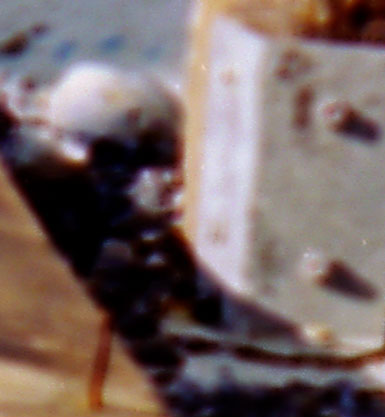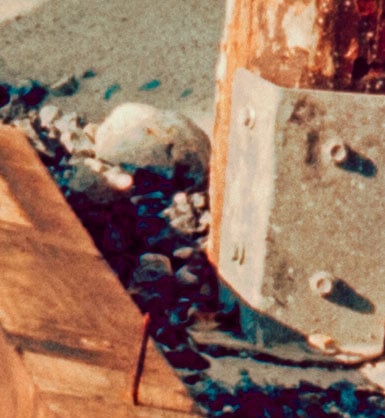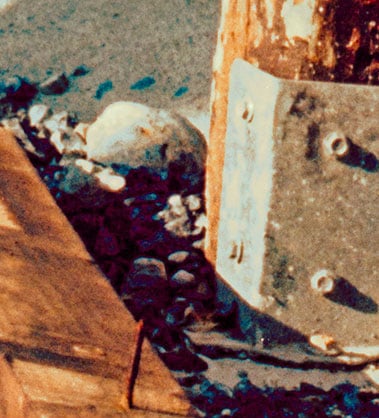Why You Should Digitize Your Film Using a Camera Instead of a Scanner
![]()
If you shoot film and aren’t much into chemicals (or don’t have a basement in which to keep a gigantic 5×7″ enlarger), you’ll soon find yourself needing a way to import those beautiful pictures you’ve taken onto your computer. What? Why didn’t I say, “you’ll need a scanner”? After all, it’s not 1987 anymore — scanners are as common as toaster ovens.
Well, I didn’t say “a scanner” because it’s not the only way you can digitalize those pictures. Indeed, even though it’s the first (and often only) technique most people will think of, it is also the most inefficient and time consuming. And it can lose a lot, I mean a lot, of the quality of the original slide or negative.
But now there is a much better alternative…
Let’s cut to the chase: I’m proposing the use of a digital camera of high pixel count — full format or crop format, it doesn’t really matter — mated with a good macro lens to “scan” the film using multiple shots, like in a panorama.
“A good macro lens” is pretty much any macro lens because, with the possible exception of some Russian misassembled lemons, they all range from really good to exceptionally good. And if you have a bellows, you can use an enlarger lens instead (an Apo-Ronar, for example, will put you back of only 60/70 euros).
But what about the quality, you say? That’s what I will be discussing in this post.
First a brief overview of the contenders we’ll be examining in this article:
Flatbed Scanner: Epson V700
The film-holder height has been calibrated. I did not use fluid mounting, but I taped the films to the film-holder and/or used glass to keep the films flat — fluid mounting should only make a difference in terms of absence of dust, appearance of the grain clumps and, possibly, slightly better tonality.
Drum Scanner: Dainippon Screen DT-S 1045Ai
Having the films scanned professionally by an external service.
Camera and Lens: Canon 5D Mark II with a Contax Zeiss 60mm f/2.8 Makro Planar for medium and large format, and with a Nikon Nikkor 35mm f/2 (non-Ai version inverted) for 35mm films
Given that the Canon 5D Mark II is the challenger, we will compare it separately against each of the opponents.
So let’s check first how this setup fares against the Epson V700, an excellent flatbed. These following images are all 100% crops.
First the “usual difference” between the output of the two systems: those crops belongs to a 4.5x6cm negative shot with an ultra-sharp Fuji GS 645, on a sturdy tripod and with a soft release. The Epson crop has been sharpened, while the Canon one hasn’t:


Yes, the Epson (or any other flatbed scanner, for that matter) here looks like an old man who is in desperate need of new glasses.
And now the best possible case (I saw the Epson behave so well only on rare occasions, like once or twice in a blue moon). Here are crops of photos that were shot on an Hasselblad 500C/M with mirror up, the standard 80mm f/2.8 Planar, tripod etc.


Yep, you just witnessed the death of flatbed scanners as film-scanners. So buy the cheapest all-in-one or LiDE model you can get, just for bills and invoices, and be done.
But surely a drum scanner, a thing that costs more than many cars, which sets you back 60/200 euros a pop, will put the Canon setup to shame. Let’s see. Here are some photos that were shot on a Linhof Technika 13x18cm with a Symmar-S 240mm f/5.6. The drum image has been sharpened by the photo service, while the Canon one is unsharpened:


No, I didn’t make a mistake. Actually, I made one when I loaded the files in Photoshop. I gave both the same name – putting them in different folders – to make a sort of “blind test”. Well, I saw immediately that there was no contest, even though I made all the tests anyway. Boy oh boy was I in for a surprise.
This surprise came when I was saving the files: I used “Save as…” because I wanted to change back their names to something meaningful, and then I discovered that the file I was absolutely sure was of the Dainippon drum scanner (because it was obviously superior) was in fact the one shot with the Canon! I even double checked the EXIF because I couldn’t believe my eyes.
The amazing thing is that I did not use the lens at 1:1 or, like I do on 35mm film, at 2:1 or 3:1 magnification. So, in exceptional cases of extremely sharp negatives – say ultra sharp lenses and microfilm like films – I would be able to pull off even higher resolutions!
And, just to clear any doubts you may have, here the two crops above after a good dose of sharpening:


To put things in perspective: these images were crops from a 660MB greyscale file; seeing it like this on a monitor is like peeping at a print measuring 5.2×3.7 meters. At 240dpi I could still print it as large as 2.30 x 1.65 meters!
As I stated before, increasing the reproduction ratio would allow you to extract even more detail. See for yourself. All the following 100% unsharpened crops came from a 6x6cm negative shot like the ones before with a Hasselblad 500C/M (with mirror up) and the standard 80mm f/2.8 Planar (and a tripod). The last crop has been resized to 50% (at 3:1 there is more grain than detail, so keeping a gigantic file is pointless). And please ignore the tonality; this is a shot from a color negative, and I’m struggling a bit to find a suitable curve:
![]()



These were only a few examples, but I have tested this technique thoroughly with many images — color and black and white, slides and negatives — and I consistently found the same results.
Even the tonalities of the films were much better preserved with the Canon than with the scanners. And, as an added bonus, including the picture borders or digitizing odd format shots – 6×17, for example – is a breeze.
Here’s the summary of what I found: forget about scanners. Yes, if you have 3,000 euros lying around and you need to scan 100 shots a week, by all means buy a Coolscan or an Imacon — but in that case, for the sake of your own sanity, you should probably go digital and abandon film!
On the other hand, if you only need to scan your very best shots, follow my advice and look into digitizing film with your camera instead of a scanner.
Update: Here’s a simple explanation and tutorial on how I scan my film using a camera and macro lens.
About the author: Gianluca Bevacqua is a fine art photographer based in southern Italy who runs the website Addicted2light. This article was originally published here.